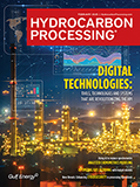Turning turnarounds into a competitive advantage through a digital ecosystem
This article, written by ExxonMobil (https://corporate.exxonmobil.com/what-we-do/materials-for-modern-living/how-exxonmobil-improved-refinery-turnarounds), details how the company uses a digital reality ecosystem to optimize maintenance and turnarounds.
- Virtual reality tools making refinery maintenance more efficient.
- Production is increasing while costs are decreasing.
- Darren Woods says performance is ‘helping us capture more value.’
Here’s what Jason Judice remembers about a turnaround on an ExxonMobil refinery unit in 2009. He and his team were replacing a series of lube oil pipes, doing the welding on site. "It was 80 pieces of piping,” he said. “It took weeks.”
Those weeks add up and cost money. Turnarounds involve shutting down refinery units for maintenance, and in many cases rebuilding part or all of them before restarting. Every day a unit isn’t running means more expense and less production.
Shaving days off turnarounds. Turnaround efficiency is critical, and we were below the industry average in the early 2010s. “We prioritized predictability over competitiveness,” said Charley Gunst, our turnaround global process manager. “We saw how we had lost ground, lost our position [versus competition].”
So we challenged ourselves to improve. At our Baton Rouge refinery, we had been using digital tools for smaller maintenance needs for some time, scanning components and virtually assembling them offsite. Welding projects that previously took weeks were now only taking days.
“Our engineers were shaving days off of olefins turnarounds, which is huge,” said David Gibson, our principal manufacturing engineer at Baton Rouge and a 25-year ExxonMobil veteran. “And then they said there’s got to be more applications for this.”
A real competitive advantage’. Fast forward to the present day, where we now have a full digital reality ecosystem that we use at facilities around the world. It uses laser scans to build precise computer replicas of our sites, down to the individual unit. These “digital twins” simulate how our units perform over time, helping with maintenance planning.
They enable measurements down to tiny fractions of an inch, which means pipes can be welded into large units offsite, then delivered for a single installation with far less onsite welding.
“Historically, the only way we’ve been able to get that information is to walk out to the unit with a tape measure and take measurements,” said Tim Westhoven, our technology scouting and ventures advisor. “With 3D reality capture, anybody on the turnaround planning team has access to that kind of dimensional information.”
The improvements in efficiency have been dramatic. In 2014, our turnarounds ranked in the industry’s third quartile. In 2022, we were in the first.
“There’s still significant improvement [in efficiency] that can be made from our current performance,” Gunst said. “That’s a real competitive advantage for us.”
CEO Darren Woods mentioned that advantage on our first-quarter earnings call April 26, saying our turnaround performance is “helping us capture more value from the market than peers, especially at a time of historically high refining margins.”
That extra value comes in the form of reduced expense and increased production. Click the boxes below to read about a few examples from our U.S. operations.






Comments